Toward Touchless Technology
Photos by Forrest Anderson
It took a pandemic to make us all hypersensitive about touching.
We’re a touchy generation. We tap the keys on ATM machines and push buttons on elevators and to proceed across crowded crosswalks. We navigate on touch screens from our personal phones to shared tablets and checkout devices at stores and the gas station. We steady ourselves on escalators by placing our hands on rails and pull handles on doors at a library, government office and store entrances. Many of us touch dozens of different surfaces in public places daily.
All of a sudden, these touch points have become threatening because of their potential to expose us to COVID-19. Although the virus is transmitted primarily through air-born particles, the pandemic has lent impetus to the development of touchless technology.
This sea change came into a world dominated by touch screens and buttons, all of which collect millions of pathogens. These include cold and flu viruses and the coronavirus, although its main form of transmission is in air-born particles. Reducing points of contact between users potentially can go a long way toward stopping the spread of those pathogens.
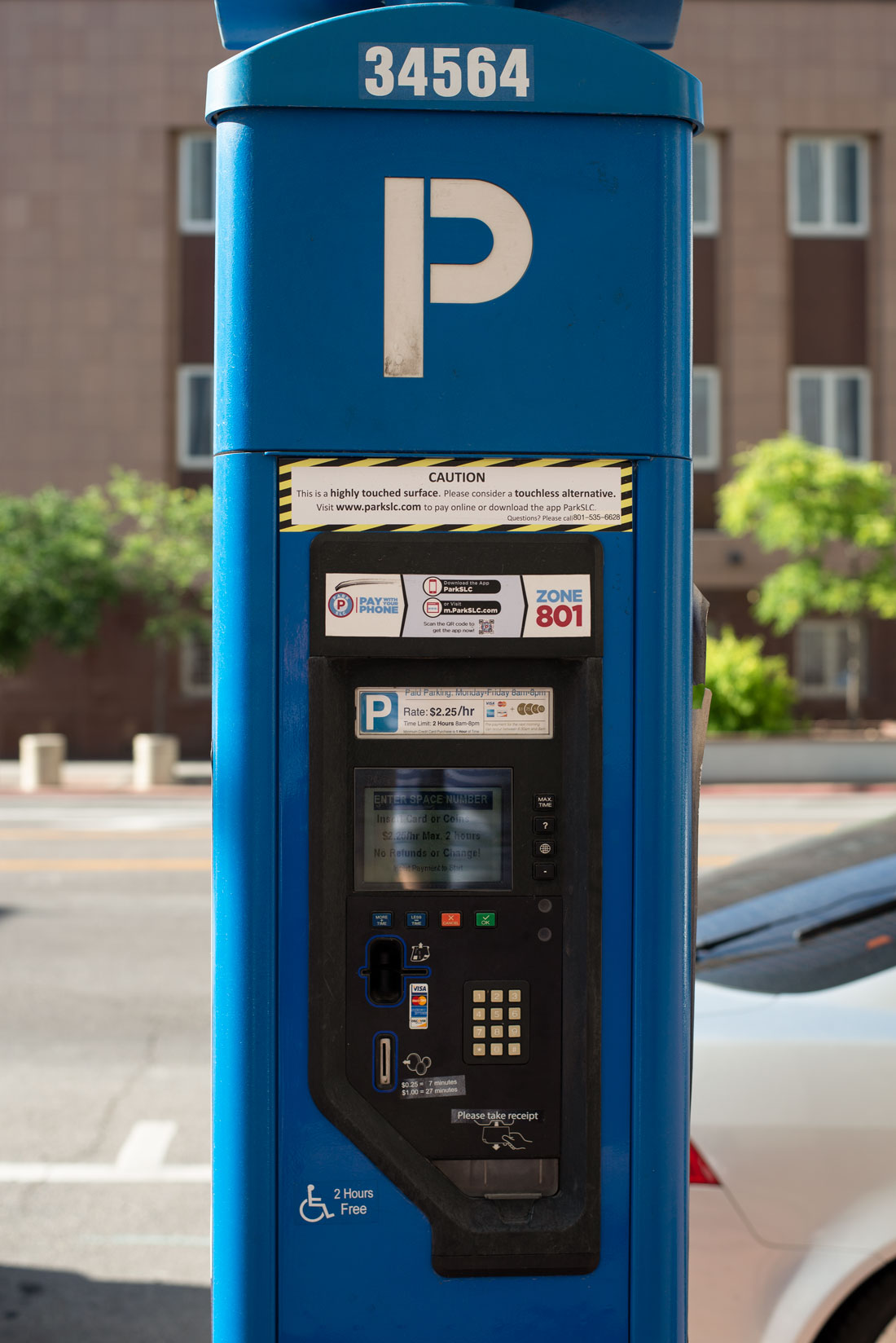
A parking machine in downtown Salt Lake City, Utah. Will the day come when we point or use other gestures to pay for parking without making contact with a machine? Or will we use our voice or facial recognition to do so?
More than 4.5 million office and commercial buildings in the United States are used daily by about 150 million workers. Spread of infections by hand washing alone in those facilities is estimated to cost American companies more than $8 billion annually in medical costs and lost productivity. People can transmit infection directly not just by touching each other, but indirectly by touching contaminated objects such as a bathroom faucet or door handle.
Long before the pandemic, we have been accustomed to some touchless technology – an automatic door that swings or slides open when we enter a supermarket, waving our hand under a faucet to wash our hands in the office or an airport restroom, or gesturing in front of a towel dispenser’s sensor to access a paper towel. We are used to rooms that light up when we enter them, triggered by a motion sensor.

Drinking fountains like this one in downtown Salt Lake City, Utah, are a prime candidate for more hygienic no-touch technology.
For most of us, much other touchless technology remains in the magical realm of Ironman swiping the air with his hands to make complex computer calculations and graphs. However, as the pandemic continues to spread globally, we are rapidly transitioning from the era of touch technology to that of touchless technology.
Here are some ways in which touchless technology is developing. None of these were invented to help us deal with COVID-19, but they are coming into their own amid the pandemic and could be a crucial part of the new world that we are creating as a result of it. Each of these technologies has both huge advantages and some disadvantages, so in many cases they will have to be used in combination.
Speech recognition
Millions of people use Siri on their iPhones and Alexa at home. This technology enables us to instruct digital assistants to look up virtually anything available on the Internet, create calendar events, play music, get directions, send messages, make reservations and get recommendations. Voice technologies enable people to use their voice to control music playback, make to-do lists, set alarms, stream podcasts, play audiobooks, and seek weather, traffic and other real-time information. Cloud computing enables small devices to get speech deciphered and acted upon via large computers in data centers.
Speech recognition is expected to make ever new inroads – replacing buttons on elevators so we will be able to say, “Sixth floor, please,” to go to that floor rather than pushing a button labeled 6. We will be able to ask vending machines verbally for what we want rather than pushing a button. Voice-recognition ticket machines are being used at some European train stations. You tell the machine verbally where you want to go, and it prints out a ticket with the information on it.
With speech recognition, ATM machines are expected to become like virtual tellers that can answer questions and even handle complex tasks such as opening accounts.
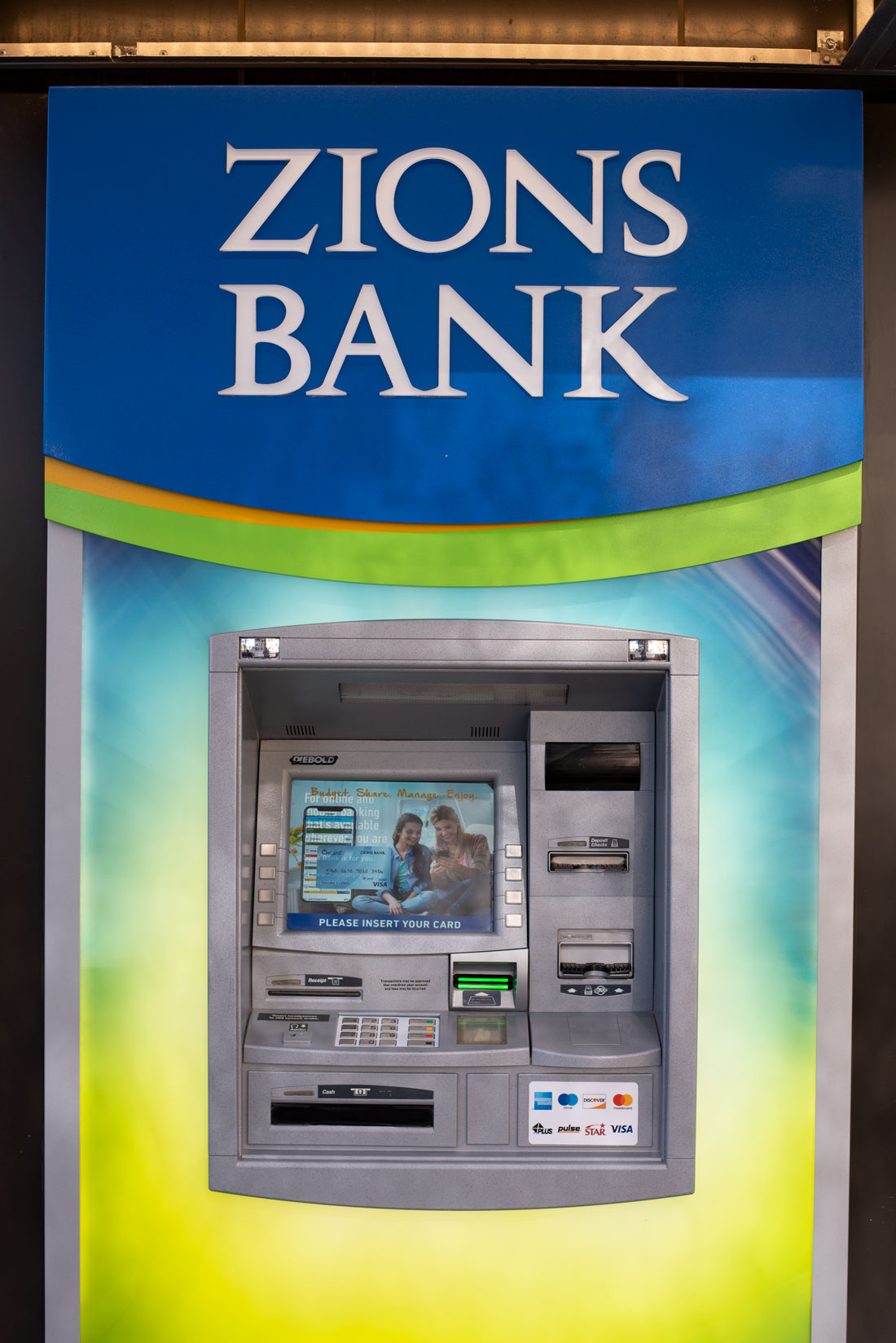
One of these days, we could all be having routine conversations about our finances with a digital ATM teller instead of pushing buttons on an ATM machine.
Touch technology is very difficult for people with vision or motor difficulties, and voice technology helps solve this problem. Voice-powered technology is much less cumbersome than traditional screen readers, which read different menu items and have several layers of menus to navigate for a blind or physically disabled person. Blind people find it useful to navigate without many layers of menus. Many home systems have voice control. Ovens and kitchen appliances that are operated by touch screens are moving toward being controlled by a spoken interface.
There is a downside to speech recognition, as there is to any technology. It obviously can be impractical for hearing impaired users, so it needs to include other ways of meeting people’s needs beside sound. Siri is hard to understand in noisy environments. She can’t be used when you need to be on silent mode, because she ignores it no matter how low you place the volume. She also can’t function without access to the Internet.
Facial Recognition
Facial recognition, like speech recognition, has been in development since the 1960s but it wasn’t until the 1990s that the military got serious about developing it. In the 2000s, billions of photos were uploaded to the Internet so that there were large databases of faces that could be analyzed. This data eventually came into use in technologies such as the Apple iPhone X, which enables people to use their faces as passwords to access the phones.
The U.S. Customs Services uses facial recognition in a few airports instead of paper passports, although it gives people the option of using their paper passport.
Facial recognition is expected to become a substitute for typing in a PIN number at ATMs and store checkouts as well as doors that require security codes or cards. Physical keys may start to disappear because our house and car will recognize our face and open when they see us.
Facial recognition has come to be seen as a major threat to privacy, especially as it has been used in countries that lack legal restrictions on tracking people’s whereabouts. It has been combined in China with infrared technology so that it can detect from 15 feet away who a person is and whether they have a fever.
There is a lot of concern about using facial recognition for checking in at large events, because it is considered too risky to collect and store thousands of images of customers. In June, IBM said in a letter to Congress that it is exiting the general-purpose facial recognition business because it is concerned about the use of such technology for mass surveillance and racial profiling. The company recommended that Congress take steps to create stricter federal laws on police misconduct regarding such technology.
Using Personal Devices
Using your own personal devices to carry out tasks that have traditionally required you to touch shared screens or come into close proximity with people. Anything that operates at the command of your own personal device allows you to avoid touching public surfaces that could be contaminated with pathogens. Digital money, a digital version of a credit or debit card embedded on your phone via Apple Pay, Google Pay or another similar service, is the major way to make contactless payments. Venmo and other apps that transfer money are similar. Retailers, wanting to protect employees from COVID-19, have installed many such digital payment options and the industry is expected to grow as much as 20 percent this year. More than 50 percent of Americans are taking advantage of “tap and go” contactless payments that eliminate long checkout lines and cut down on virus transmission risks for consumers and staff.
Hotels also have taken steps to reduce contact points when people are traveling. Mobile-based virtual check-in processes allow guests to bypass the front desk and go straight to their rooms and to unlock their rooms using mobile devices. Digital ordering from a website on our own phone can solve the problem of touching a menu at a restaurant to order food. We can expect to see more people to use personal devices instead of shared ones to carry out such transactional tasks.
Other uses of personal devices include contactless surveys at large events which people can complete on their own devices rather than at a kiosk or on a shared tablet.
Touchless Screens
In some environments such as hospital operating rooms and in the video game industry, gesture-based technology has long been used. However, wider use of no-touch solutions are being developed with the potential of use in offices, hospitals, universities and industrial plants amid the pandemic.
Touchless screens recently developed at the University of Cambridge are called predictive touch. They use artificial intelligence and sensors to predict a user’s intended target on a screen when the user points to it but doesn’t actually touch the screen. The screens originally were intended to be used in cars so that drivers could keep their attention on the road better, but they can be used in all different types of touch screens.
You just point at the app you want to use or button you want to select, and the system records that gesture as a touch. The gesture tracker on these screens includes radio frequency sensors, data about the environment, a user profile, a user interface design that provides context for past actions and eye-tracking sensors to determine a users’ intent in pointing at a screen. The technology uses camera based gestures, short-range wireless, voice recognition and touchless screens.
Optical sensors detect input signals such as physical movement, facial movement, facial patterns, voice and user behavior and pass them on to a digital image/voice processor which converts them into an electrical signal that is used to trigger an action. The technology interprets human movements and behaviors through algorithms that are transmitted to computers as valid commands.
Tests and simulations have found that the technology reduces interaction time and effort by as much as half and is highly accurate.
Touchscreens are difficult to use when people are driving a car or doing other activities while in motion such as biking or jogging. The technology can make screens safer by reducing the cognitive time it takes drivers to use them and therefore increasing the time they spend with their eyes on where they are going.
Touchless screen also could work for ticketing at rail stations, checking in at airports, and checking out at high school lunch lines, to name a few uses. This technology could be important given research that indicates that COVID-19 can linger on surfaces for days.
The technology could be quickly deployed with software that can work on any current or new touch screen – computers, smartphones, tablets, web cams and laptops. Smartphones are incorporating touchless features so you can wave your hand over the smartphone screen to answer a phone call. The same technology also could be used for displays such as holograms or projections that don’t have a physical surface.
The biggest challenge is expected to be teaching people to keep their hands off of screens when they are accustomed to touching them.
Because the screen doesn’t have to be touched, it can be used and personalized for given users in ways that it can’t be configured using touch technology. The technology also doesn’t require any learning on the part of the user. It relies on the system to predict what the user intends.
Workplaces
In business, touchless technology is expected to have a major impact on employee productivity and customers’ and visitors’ experiences. Touchless technology is a key strategy being considered in workplace environments as they are being reimagined to prevent the spread of COVID-19 and allay workers’ and customers’ fears.
Shifting from shared to personal devices, using voice-controlled digital assistants and using gesture-controlled touchless technologies as well as touchless cleaning methods are all among strategies being considered and applied.
More elevators, lighting and HVAC controls and vending machines are expected to be automated with no-touch technology or moved to personal devices to insure contactless workplaces. A shared Alexa device can enable employees to ask Alexa to open or close a window blind or control lighting with no one touching a surface.
Instead of exposing a receptionist to infection, visitors at some businesses will be able to pass through contactless entry via sign-in apps on their smartphones that ask COVID-19 screening questions. Such information can be stored in a cloud-based visitor log for contact tracing.
An employee expecting a visitor can be notified of their arrival with a voice call, text, email or a Slack message when the guest checks in. The employee can respond with a click.
Workplace access can be controlled by facial recognition in workplaces that require a high level of security.
Gesture-based no-touch technology is also an option to open non-secure doors.
Touchless technology also can collect and analyze data to give organizations valuable insights about how to better design their work environment for a seamless experience. For example, when an employee opens a door using a gesture, their office can adjust the temperature range or lighting hue. Information about how many people are occupying an area of an office or a corridor at a given time can help in designing shared spaces that allow for social distancing.
Scientists also are working on enabling human thoughts to control digital devices. This technology, which is being pioneered by Facebook and other big tech companies for use as assistive devices for the disabled, could end up being used in the workplace as well. It potentially could enable people to type hundreds of words per minute by thinking.
Touchless technology is especially helpful to technicians who must wear protective gloves at all times, because touch screens don’t respond to safety gloves. Combined with real-time audio and visual feedback and augmented reality, technicians can access information about the use of specific tools by simply looking at the tools’ interface. They can get live stream video support from support teams that allows for accurate real-time walkthrough fixes.
Touchless technology can be incorporated into smartphones so people can use it while walking or jogging, allowing them to easily and accurately select items on a phone without physical contact. It works in situations such as a moving car on a rough road, or if the user has a disability such as Parkinson’s disease or cerebral palsy that causes their hands to tremble or jerk.
Laser scanning technology is being used to map out facilities to allow for cost-saving highly accurate planning of work facilities before construction starts.
No-touch restroom fixtures, systems and doors for restrooms have been used in some places since the mid-1980s, but the technology is ever improving and includes controlling the amount of soap, water and paper dispensed. Many new restrooms use maze-type entries that protect users’ privacy without them having to touch door handles or knobs.
Touch-free cleaning involves spraying cleaning solutions onto fixtures, walls and floors, rinsing them with pressurized water and vacuuming then to remove moisture and dirt. This approach has been found to protect cleaning workers from infections and be faster and more efficient. It also avoids cleaners having to use paper products.
Workers in real estate are looking to no-touch technology to help them transition from on-site to virtual interactions. Virtual tours of rental properties or properties for sale are helping people find homes while agents focus on tasks that require personal attention. Tenants can schedule on-line appointments to tour rental properties virtually. Tenants can meet agents using FaceTime, Skype, and Zoom as well as view 3D virtual property tours. Partly as a result, housing is expected to rebound in the second half of 2020.
Location-based capacity monitoring is being tried out to monitor crowd movement and capacity at events to maintain social distancing. Staff are alerted when foot traffic in an area is increasing and additional social distancing measures need implemented.
Will we be able to avoid all contamination from others with a touchless environment? Clearly not. It is inevitable in an urban environment that we will have shared spaces that we will have to touch. No one has worked out yet how people can stand up on a crowded bus without touching metal rails that large groups of people have already touched. Some of the most popular share programs implemented by cities in recent years, such as the scooters below, expose people to pathogens. However, we can still expect the pandemic to transform hygiene in many public environments.
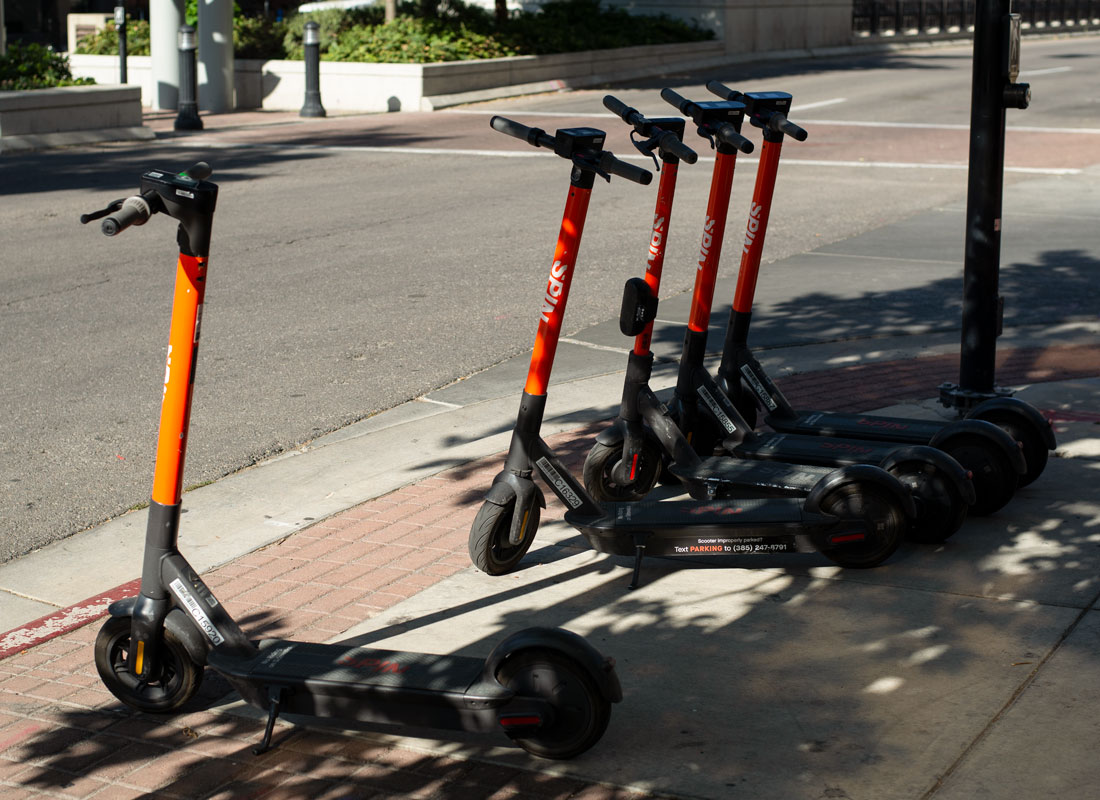
Check out these related items
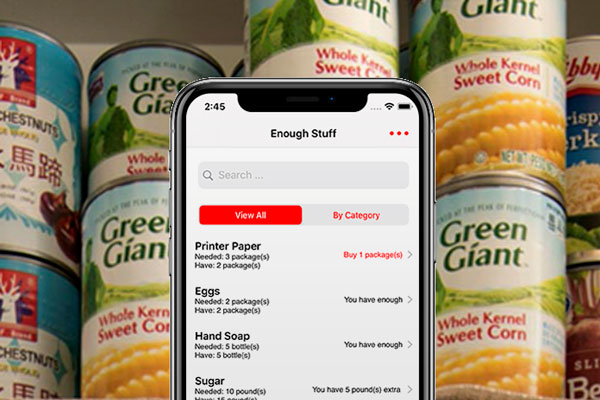
Enough Stuff App
The Enough Stuff inventory app for iOS helps you keep track of how much you have of items so you don't buy more of them than you need.

Green Thumbometer App
The all-in-one iOS app that's a gardening calendar, gardening journal, gardening to-do list and source of gardening information.

Home Gnome App
The iOS app that helps you keep track of what tasks you need to do and when to do them to maintain your home well all year long.
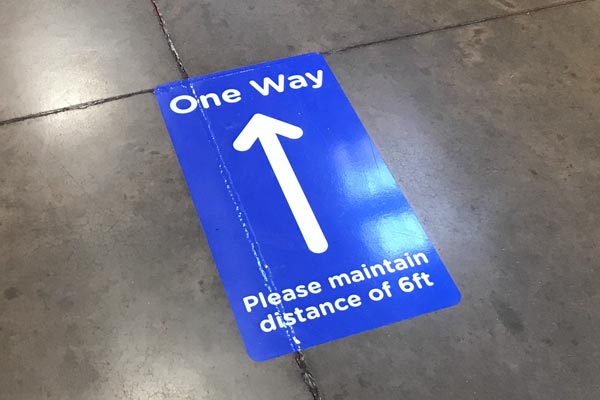
What does the future hold?
Dozens of experts’ analysis of long-term trends can help us identify the challenges and opportunities amid the COVID-19 pandemic.
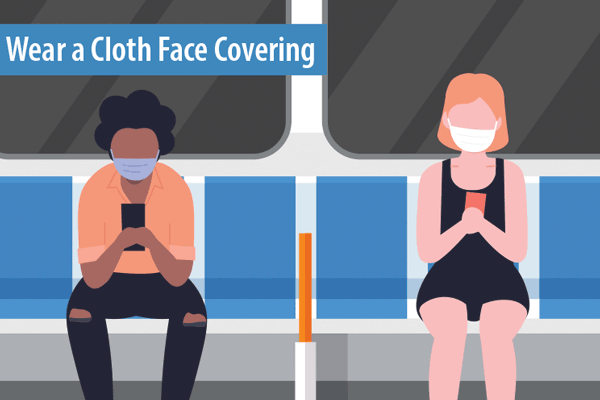
Making the Invisible Visible
The field of data-based infographics is helping the world see, understand and respond to the invisible threat of the pandemic.
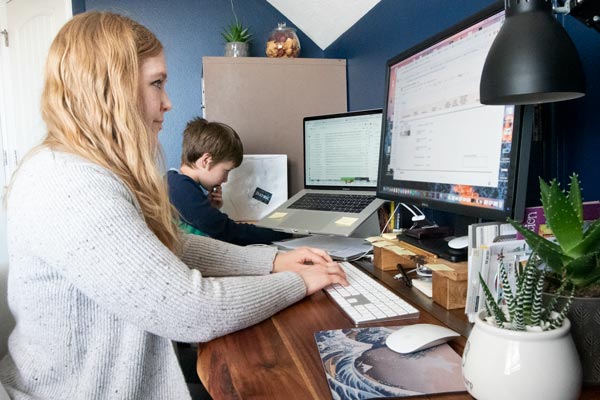
Let’s Get to Work - From Home
Remote work is one of the best ways to limit the coronavirus and keep the economy going. Here's a guide to how to work from home.
